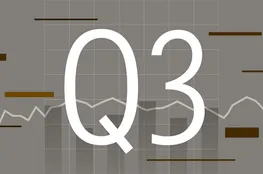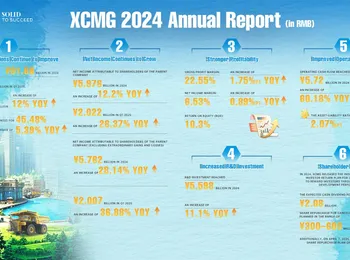Recent reports have raised concerns about potential inaccuracies in U.S. inflation data, stemming from changes within the Bureau of Labor Statistics (BLS). Experts are warning that a hiring freeze implemented by the agency is leading to a reduction in the number of businesses surveyed, which could significantly skew key economic indicators. The Wall Street Journal’s investigation reveals that the BLS, responsible for publishing inflation rates, has informed outside economists that this operational shift is causing a contraction in its data collection efforts. This situation underscores the critical importance of reliable data in shaping economic policy and understanding market trends. The BLS's role is paramount in providing the information necessary for informed decision-making across various sectors, including finance, government, and industry. The potential for errors in inflation data can have far-reaching consequences, impacting everything from interest rates to investment strategies. The agency’s current challenges highlight the need for robust data collection processes and effective oversight to ensure the integrity of economic statistics. Maintaining accurate inflation data is not simply a matter of bureaucratic efficiency; it’s fundamental to the stability and prosperity of the nation's economy. The ongoing scrutiny of the BLS’s methodology reflects a broader concern about the quality and transparency of government data collection, a concern that resonates with economists and policymakers alike. The situation demands a thorough examination of the agency's operations and a commitment to best practices in data analysis and reporting. The core issue revolves around the agency's ability to maintain a representative sample size, a crucial element in accurately reflecting inflation trends. Without a sufficient number of businesses participating in the survey, the resulting data is inherently susceptible to bias and error. The challenge is further complicated by the potential for undetected biases within the data collection process, highlighting the need for rigorous quality control measures. The BLS’s actions have triggered a wave of concern among economists and analysts, prompting calls for increased transparency and accountability. The situation underscores the delicate balance between operational constraints and the imperative to maintain the integrity of vital economic statistics. The potential consequences of inaccurate inflation data extend far beyond the immediate economic impact, potentially influencing long-term economic forecasting and policy decisions. The agency’s response to the concerns raised by economists has been criticized for a lack of transparency, further fueling speculation about the accuracy of the data. The situation demands a proactive approach to data validation and quality control to mitigate any risks associated with potential biases or inaccuracies.
The core issue lies in the BLS’s methodology. Traditionally, the agency checks prices at a substantial number of businesses to gain a comprehensive understanding of inflation trends. However, the current hiring freeze is forcing the agency to curtail this process, leading to a diminished sample size. This reduction directly translates to an increase in 'sampling error,' a statistical measure of uncertainty in data estimates. Economist Alan Detmeister cautions that while the full extent of the problem remains unclear, the directional trend is undeniably worsening, potentially compromising the reliability of the inflation data. The sampling error inherent in a smaller sample size significantly increases the potential for misrepresenting the true level of inflation. This is particularly concerning given the reliance on inflation data for critical economic decisions. The agency's ability to accurately gauge inflation trends is paramount for informing monetary policy decisions and assessing the overall health of the economy. The reduction in the sample size raises serious questions about the validity of the data and the agency’s ability to provide reliable economic indicators. The challenge is further compounded by the potential for undetected biases within the data collection process. The situation highlights the importance of maintaining a representative sample size and implementing robust quality control measures. The BLS’s actions have triggered a wave of concern among economists and analysts, prompting calls for increased transparency and accountability. The reduction in the sample size significantly increases the potential for misrepresenting the true level of inflation. The challenge is further compounded by the potential for undetected biases within the data collection process. The agency’s actions have triggered a wave of concern among economists and analysts, prompting calls for increased transparency and accountability. The core issue revolves around the agency's ability to maintain a representative sample size and implementing robust quality control measures.
The implications of inaccurate inflation data are far-reaching. A precise inflation rate is crucial for assessing the overall health of the economy. It’s a fundamental metric used to determine adjustments to social security benefits and to ascertain an individual’s tax bracket. Businesses, investors, and policymakers heavily rely on this reading to inform critical decisions regarding investments, economic strategy, and monetary policy. Furthermore, the Federal Reserve, tasked with maintaining price stability, is laser-focused on inflation data when setting interest rates for the nation. Jerome Powell, the Federal Reserve Chair, recently emphasized the importance of tracking economic activity, stating that the United States has historically led the world in this area and that maintaining this leadership is vital. The ability to accurately gauge economic conditions directly impacts monetary policy decisions, influencing borrowing costs and overall economic stability. The reduction in the sample size significantly increases the potential for misrepresenting the true level of inflation. The situation highlights the importance of maintaining a representative sample size and implementing robust quality control measures. The reduction in the sample size significantly increases the potential for misrepresenting the true level of inflation. The situation highlights the importance of maintaining a representative sample size and implementing robust quality control measures. The reduction in the sample size significantly increases the potential for misrepresenting the true level of inflation. The situation highlights the importance of maintaining a representative sample size and implementing robust quality control measures.
Specifically, concerns arose after the April data was published on May 13th. A group of economists noticed anomalies within the released figures and subsequently requested further information from the BLS. In response, government officials provided an excerpt from an internal report, offering limited context for the changes. The Bureau of Labor Statistics and the Labor Department have declined to provide direct comment on the matter. This lack of transparency further amplifies concerns and underscores the potential for undetected biases in the data collection process. The situation highlights the importance of maintaining a representative sample size and implementing robust quality control measures. The reduction in the sample size significantly increases the potential for misrepresenting the true level of inflation. The situation highlights the importance of maintaining a representative sample size and implementing robust quality control measures. The reduction in the sample size significantly increases the potential for misrepresenting the true level of inflation. The situation highlights the importance of maintaining a representative sample size and implementing robust quality control measures.
The BLS’s actions have triggered a wave of concern among economists and analysts, prompting calls for increased transparency and accountability. The reduction in the sample size significantly increases the potential for misrepresenting the true level of inflation. The situation highlights the importance of maintaining a representative sample size and implementing robust quality control measures. The reduction in the sample size significantly increases the potential for misrepresenting the true level of inflation. The situation highlights the importance of maintaining a representative sample size and implementing robust quality control measures. The reduction in the sample size significantly increases the potential for misrepresenting the true level of inflation. The situation highlights the importance of maintaining a representative sample size and implementing robust quality control measures.
























